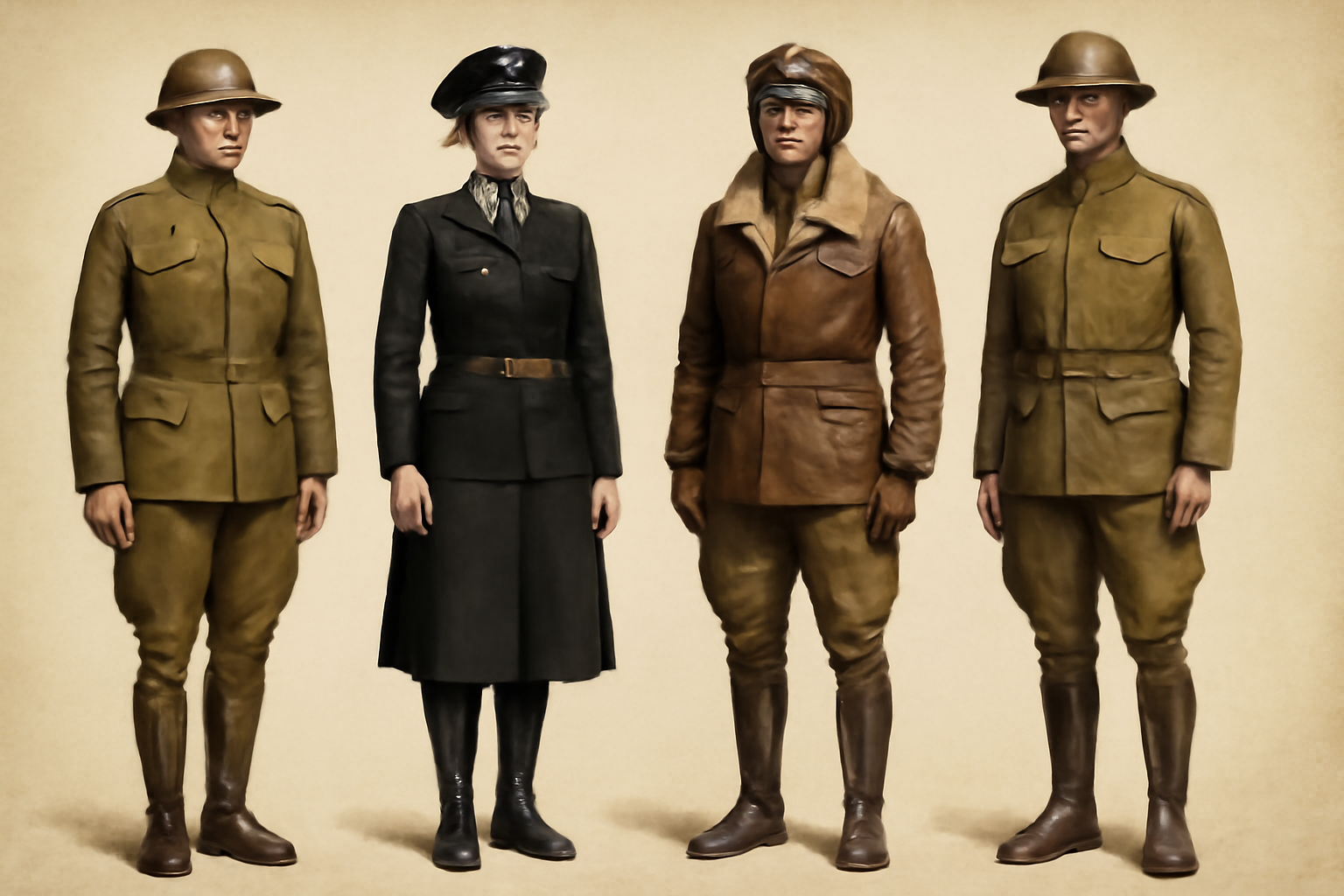
"WWI Uniform Identification: Expert Guide to WW1 US Uniforms, Female SS Uniforms & Pilot Gear"
Published on Jun 03, 2025
How to Identify WWI Uniforms: A Complete Guide to World War One Uniforms
Introduction
World War One uniforms are more than just clothing—they are artifacts of history that tell the story of bravery, innovation, and the global conflict that shaped the 20th century. Whether you’re a collector, historian, or reenactor, learning how to identify WWI uniforms is essential. This guide will help you understand the nuances of these uniforms, especially the WW1 US uniform, along with other significant variations like female SS uniforms and pilot attire. Let’s dive into the fascinating world of World War One uniforms!
Understanding WWI Uniform Identification
The First World War introduced a range of military uniforms that varied significantly depending on country, rank, and role. Identification hinges on recognizing key features such as fabric, insignia, color, and style.
Why is Identification Important?
- Authenticity Verification: Helps confirm if a uniform is genuine or a reproduction.
- Historical Accuracy: It is essential for reenactors to portray soldiers correctly.
- Collector’s Value: Identifies rare items that may be valuable or historically significant.
- Educational Insight: Deepens understanding of WWI military history.
Key Features of WW1 US Uniforms
The WW1 US uniform is one of the most recognizable, given America’s pivotal role in the conflict starting in 1917.
Fabric and Color
- Typically made of olive drab wool, which was durable and practical.
- Color varied slightly but was generally a muted greenish-brown to blend with battlefields.
Jacket and Insignia
- The iconic M1917 wool service coat featured a stand-up collar and five-button front.
- Shoulder patches and rank insignia were prominent, with divisions such as the 1st Infantry Division (The Big Red One) being widely known.
- Collar devices indicated branches: crossed rifles for infantry, crossed sabers for cavalry, etc.
Headgear
- The M1917 helmet, or “Brodie helmet,” was a steel helmet shaped like a shallow bowl designed to protect soldiers from shrapnel.
- Soft caps were also used during non-combat situations.
Pants and Footwear
- WW1 pants were high-waisted wool trousers designed to tuck into leather puttees or boots for added protection.
- Puttees wrapped tightly around the lower leg, securing the pants and offering ankle support.
Female SS Uniforms in WWI
Although World War One is often seen as a male-dominated conflict, women also played vital roles, and their uniforms, especially within German units like the SS, have distinct characteristics.
Key Identification Points:
- Female SS uniforms were tailored to fit, often featuring a skirt rather than pants.
- The jackets maintained military cuts but with feminine tailoring.
- Insignia and badges followed the same rules as male SS uniforms but adapted for women’s ranks and roles.
- Materials tended to be slightly lighter to accommodate women’s roles in auxiliary or support capacities.
World War 1 Pilot Uniforms: The Early Aviators
WWI also saw the dawn of military aviation, and pilot uniforms had specific features to accommodate their unique roles.
Distinctive Elements:
- Leather flight jackets were common, protecting against cold temperatures at altitude.
- The pilot helmet was often leather with ear flaps and goggles for eye protection.
- Uniforms included heavy wool trousers and tall boots designed for cockpit use.
- Insignia often included wing badges, symbolizing pilot status.
Where to Buy World War One Uniforms for Sale
Finding authentic WWI uniforms for sale requires caution and expertise. At Paddelaters, we specialize in sourcing and selling genuine World War One uniforms and accessories.
Tips for Buying:
- Look for clear provenance or certificates of authenticity.
- Check details like stitching, fabric quality, and wear consistent with age.
- Buy from trusted dealers or specialist websites.
We offer a curated selection of WW1 US uniforms, female SS uniforms, pilot uniforms, and authentic WW1 pants to suit collectors and reenactors.
Conclusion
Identifying WWI uniforms requires a keen eye and understanding of the historical context. From the olive drab wool of the US infantry to the tailored female SS uniforms and the rugged pilot gear, each uniform tells a unique story of the Great War. Whether you’re looking to buy world war one uniforms for sale or simply want to deepen your knowledge, knowing how to spot these key features ensures you honor history accurately.
